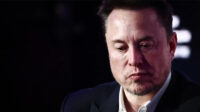The financial demographic of America was displayed to me recently through the juxtaposition of two illuminated scrolling posters displayed on the side of a Plexiglas transit shelter on East 72nd Street in New York City.
One poster promoted Charles Schwab, the “Talk to Chuck” stock brokerage and investment company. Clearly aimed at people with plenty of money to invest, the poster pitched well-heeled citizens who want see the value of their portfolios grow. The other poster, which scrolled into view every few minutes in alternation with the Schwab poster, addressed an entirely different demographic and advertised the value, availability and benefit of government issued food stamps. Two minutes later, it was back to Chuck, then two minutes after that, Food Stamps, and so it goes, 24 hours a day.
The two target markets addressed on those rotating posters represent a basic economic demographic in today’s America, the “haves” and the “have-nots.” The haves enjoy the benefits of an economic system that rewards the wealthy with a variety of wealth-building methodologies. The have-nots, meanwhile, must avail themselves of food-stamps and the services of “pay-day” loan operations that charge usurious loan fees guaranteed to leave the have-nots wanting. A third demographic, what we used to call the American “middle class,” has apparently become irrelevant from a marketing perspective.
Our income tax system, originally conceived as a way to prevent a severe imbalance in income distribution, has lost much of its progressive basis of graduated tax rates, and increasing legislative attention is now paid to the idea of creating a consumption-based user sales tax. Using this approach, the poor and low-income citizens ultimately will pay a far greater percentage of their household income in taxes than will the wealthy.
Lurking not far below our bifurcated demographic are deeply embedded cultural and political forms plus popular opinions that have historically denigrated the poor while simultaneously elevating the rich. Until 1910, only documented property owners were able to vote in U.S. Senate elections. Poll taxes (a fee assessed when arriving to vote) were customarily employed to insure that only those with money could participate in elections, and this practice continued into the 1960’s until outlawed in a court decision. Vagrancy laws which made the lack of readily available money an actual crime subjected the poor to arrest and were once commonplace across America. Today, the poor and homeless are regularly denied a decent and secure place to sleep.
Our dominant social narratives continue to reinforce history. The poor are regularly referred to as “lazy, shiftless, dishonest, dirty and uneducated.” They are accused of “spreading disease, taking drugs, reducing property values, increasing crime, and raising the cost of government.” Reviled as “bums, leeches and free-loaders looking for a handout” they become easy targets for criminals and law-enforcement alike.
The haves, on the other hand are declared “clever, creative, resourceful, ambitious and deserving.” Called “leaders, visionaries, entrepreneurs, self-made, brilliant and successful” their wealth makes them the objects of adoration, attention, and celebrity. Are the wealthy actually a better type of human being; does wealth confer virtue or decency; is poverty immoral and are the have-nots bad people? Clearly not. Wealth itself does not determine matters of happiness or success any more than poverty insures depression or failure.
So by what measure should we judge others? Perhaps we should “Talk to Chuck.”




